 How do you cope with change? Is this image familiar? Do you happen to be a white knuckler - someone who holds tight and pushes through things that are difficult? Or are you perhaps a procrastinator or avoider – to the point that you successfully avoid doing things that are important to you? In a previous post, I talk about how stepping out of your comfort zone is necessary to create change… But man, is it uncomfortable!  There is a middle ground between white knuckling it and not doing it at all. Why not introduce some comfort while you step out of your comfort zone? It’s a much kinder and compassionate way of treating yourself. Here are some of my favorite ways to create comfort while seeking to do the uncomfortable: 1) Take smaller steps. If something is way too uncomfortable, I like to break it down into smaller chunks or actions, which feel more doable. It might take longer to get where I want to go, but on the flip side, I tend to be happier when I get there. 2) Pay attention to your body. When I get into the “land of scary action”, I have a tendency to want to push – to work really hard. There’s nothing wrong with working hard, as long as I am also giving my body what it needs for wellness. So I make a point of NOT ignoring my hunger or my tiredness. I make sure I get exercise – even if I don’t feel like it. My body and mind both thank me in the long run for this. 3) Practice self-compassion. How kind are you to yourself? Beating ourselves up actually makes us feel bad and stressed out. I know for me that being hard on myself only makes me push harder – but I am not happy and definitely not as productive or resourceful. Here’s a great short video by Kristin Neff on how to practice self-compassion. It’s possible to travel into scary, uncomfortable territory AND be kind to ourselves and make progress towards our goals. In fact, if you do this you will be more available, present, and responsive because you aren’t pushing or acting out of fear. If you would like help with this as you pursue your goals, simply click reply. Happy February! Jen
1 Comment
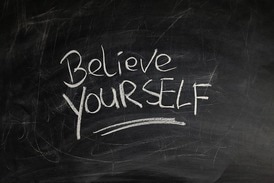 As I look forward to 2016, I find myself thinking about self-efficacy, which means your belief in your ability to do something. It’s different than self-esteem, which means how good you feel about yourself. But they’re related… As you increase your self-efficacy, you tend to feel better about yourself. So, in celebration of self-efficacy - of all the things you have tried that were scary, even on the SMALLEST of levels, I offer you this wonderful list of quotes compiled by Jeff Haden. I have put my favorites below. To see the entire list, click here.  1. "If you hear a voice within you say 'you cannot paint,' then by all means paint, and that voice will be silenced." Vincent Van Gogh 2. "Once we believe in ourselves, we can risk curiosity, wonder, spontaneous delight, or any experience that reveals the human spirit." e.e. cummings 3. "Argue for your limitations and, sure enough, they're yours." Richard Bach 4. "Our deepest fear is not that we are inadequate. Our deepest fear is that we are powerful beyond measure. It is our light, not our darkness, that most frightens us. We ask ourselves, 'Who am I to be brilliant, gorgeous, talented, fabulous?' Actually, who are you not to be?" Marianne Williamson 5. "Talk to yourself like you would to someone you love." Brene Brown 6. "Successful people have fear, successful people have doubts, and successful people have worries. They just don't let these feelings stop them." T. Harv Eker  7. "It is not the mountain we conquer, but ourselves." Sir Edmund Hillary 8. "When I started counting my blessings, my whole life turned around." Willie Nelson 9. "If you are insecure, guess what? The rest of the world is, too. Do not overestimate the competition and underestimate yourself. You are better than you think." T. Harv Eker 10. "To anyone that ever told you you're no good ... They're no better." Hayley Williams 11. "Don't be satisfied with stories, how things have gone with others. Unfold your own myth." Rumi Happy New Year!! Jen  Happy December everyone! It’s getting darker out there, isn’t it? The time change and short days make this a natural time for reflection... This post is dedicated to the week after Christmas but before the New Year, when things are pretty quiet. It’s a time to start thinking about the coming year, and perhaps even New Year's resolutions. What do you tend to think about at this time of year? It’s pretty common to focus on what you want in your life, or what you would like to change...  Instead, I invite you to create a very different space. What if the last week of 2015 were devoted to taking stock of all your achievements, successes, things that went well, surprises, and loves? Can you imagine how devoting 7 days to recording those things would shift what you envision for 2016? Motivation and flow do not come from kicking ourselves; they come from our deeper values. Chances are, that after a week of taking in what has gone well, your mind is going to be in a much more fertile place to think about what new things you want to create in the coming year. Here’s a step-by-step guide to create a reveling space at the end of December. (This is a fabulous activity to do with your family or a friend.) 1) Block out 1 hour on your calendar after Christmas to answer these questions:  - What went well this year? - What successes did you have (internal and external) - What are you grateful for in 2015? Include obvious things (a new job or a move) and not so obvious things (being grateful for your dog or a roof over your head). Touch on your work life as well as your personal life. You might have a separate list for each. Explode your idea of what counts on this list. 2) For at least 5 minutes every day after that, review your list. Add to it. Refine it. 3) On the final day (perhaps December 31st?), look at your list and ask yourself: - What is it like to see this list? - How do I feel about it? - What strengths did I use to pull all this off? (Write them down.) This year I helped create a coaching program for parents on welfare in WA state. That has meant a lot of new challenges, opportunities, and risks. I plan to sit down and write down all the successes from that, as well as my other projects and endeavors, to get a bird’s eye view of my year, appreciate how I have grown, and develop my gratitude. I am sure that out of that space will come inspiration to help me form a vision for 2016. I invite you to do the same for yourself. Spend the end of your year in gratitude and celebration – what a great way to ring in your next year. If you get stuck, I'm happy to help... Send me an email. All the Best, Jen  Are you feeling impatient with a change you want to see in your life? Do you find yourself pining for that change to happen NOW? If you're feeling the frustration of that impatience, you probably find yourself thinking about large actions you can take to bring a desired change about.  Of course, there is a time for big action: quitting jobs, going to grad school, starting a new relationship. But if you don’t have clarity around what that big action should be, or you are not ready for it, most likely you won’t pull it off. Here’s some really good news for you: very small action is enormously powerful. Think about it this way… when you are sick and go to the doctor they give you a tiny, little pill - really nothing compared to your body mass in size – and yet it has a powerful effect on your chemistry.  It is the same with small actions and your mental chemistry. Instituting a very small change can be quite powerful in producing a large mental shift. How to do this? Think about an area in your life you would like to be different: 1) Ask yourself, “What’s the smallest action I can take that will still feel like I am moving forward?” 2) And then do that action EVERY DAY – consistency is key. Just like a doctor’s prescription, you need to keep taking it until you experience a shift. Here’s a personal example… Lately I have had a lot of stress and I was starting to feel overwhelmed. Thinking about it, I realized I wasn’t checking in with myself enough. So I put this reminder for 8 AM on my phone: How can my compassion move me forward today? When I saw it first thing every morning, I started out my day feeling better. In addition to that, I found myself remembering it throughout the day. Every time I did, my stress level came down, I took a deep breath, and I made different choices than I would make when feeling stressed. It’s small, but it has produced a big shift.  So think small – don’t doubt how powerful small is. Small is often WAY more powerful than large. And it can be way more kind to ourselves than demanding big change. As always, if you would like to talk about applying this in your life, simply hit reply for a complimentary consultation.... And please send this to a friend! All the Best, Jen  Carl Rogers, one of the founders of humanistic psychology, said, “The good life is a process, not a state of being. It is a direction not a destination.“ The term ‘the good life’ is used in positive psychology to talk about what makes for a fulfilling and happy life. Research shows that the good life isn’t a thing: it’s not a vacation destination, an iPhone, or owning a house. While things can bring us happiness, we quickly adapt to the happiness they bring, and they become stale. When that happens, we need more of it to keep getting happy. Think about it: if you’re planning your nextgetaway the second you get home from a vacation, where did all that happiness go?  So what makes for lasting happiness? Research shows that one way to have deeper, more lasting happiness is to engage in meaningful activities. Activities become meaningful when they involve your deeper values. When you are acting in line with your values, you tend to feel more in sync with yourself and what is important to you. Do you know what’s most meaningful for you? Here are a few resources to help you figure it out: 1) You can start simply by asking yourself what’s most important to you in your life. There’s a great exercise for that here: http://www.thehappinesstrap.com/upimages/Values_Questionnaire.pdf 2) Franklin Covey offers a free mission builder website – it’s excellent and helps you dig a little deeper into what is important to you. You can create one personally or for you family. You can find that here. 3) You can take the free Values In Action Survey that will rank you on 26 strengths (known as values in action). Click here for the survey. You can use your top 5 to start exploring how those values show up in your life and how to involve them to create more meaning for yourself. All of these activities will help you get to know what you value better. I hope that you will use them to start a conversation around how you can have MORE of what you value in all areas of your life. You might even do it with your partner or friend – it can be powerful sharing it with another. If you would like more information on how to apply the tools above in your life, simply hit reply and we can set up a free consultation to talk about it. Wishing You All the Best, Jen Nike says, “Just do it,” but I say, do not “just do it” if that isn’t working for you and here’s why…  Let’s take something simple, maybe you want to be on your phone less because it stresses you out (all those texts, emails, FB notifications, tweets...) In your head you think, I’ll ‘just do that’, I’ll stop checking my phone after 6 when I leave work. And then maybe you do it for a few days, maybe not, but sooner or later it’s 7 and you’re back on your phone (and feeling stressed out). Most folks have experienced this with some goal in our life…. It’s helpful to know that we go through stages when creating change in our lives. Natural changers go through them without thinking about it. So here’s a recap in case it helps you get off your own back, create some compassion, and maybe a different plan than, “Just Do It!” Here are the stages: 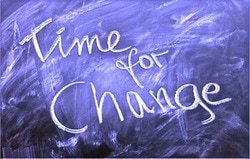 1) Not being sure we want to change 2) Wanting to change but having no plan 3) Creating a plan but not yet taking action 4) Taking action but it’s not yet a habit 5) The action becomes a part of our lives and requires less effort 6) (We may relapse to an old behavior occasionally and need to figure out what happened) The quickest way to sabotage change in your life is to make yourself get into action when you aren’t ready. This is where ‘Just Do It’ becomes your UNDOING. So let’s say you want to be on your phone less because it adds to your stress and you would like to relax in the evenings. Well, if you’re not able to do it right off the bat, it’s easy to get down on yourself. “Man, what’s wrong with me? Just stay off the phone, what’s so hard?” And then what happens is we make ourselves feel WORSE and we still don’t change. Here’s another route: have some compassion for yourself and apply the stages I just talked about. Here’s what it might look like using the cell phone example. 1) Examine why you want to change: why do you want to stay off the phone and why do you want to use it in the evenings? The pros need to outweigh the cons before change is really going to stick. It can be helpful to make a list of the pros (why you want the change) and the cons (what will happen if you don’t.) You might have to get more info and do some thinking before the pros are big enough to make change worthwhile. 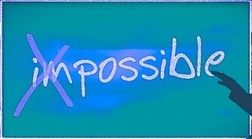 2) Create a plan: maybe you need to create a realistic plan BEFORE you do it. For example, maybe you want to stay off the phone, but you have important calls you need to be available for. So you decide to turn off all your notifications, but leave your ringer on. Perhaps you decide to put your phone in a place where you can hear it, but you can’t get to it easily. There are many creative ideas here. You may need to brainstorm ideas and create a REALISTIC plan before you are going to take action. 3) Take Action: It can be helpful to really define EXACTLY WHAT you’re going to do and make sure it supports your goal (less stress). This will help you take specific action that gets you to YOUR goal. Take that plan and break it down into specific steps. I used an easy example here. But this can be applied to ANY change you want to see in your life…. Relationships, job happiness, job transitions, building your business, health goals, and on and on. If you would like some help applying this to a goal in your life, simply click reply and let’s chat! Maybe there’s a change you’ve been wrestling with lately? I would be happy to offer you a free strategy session on how to put this into play in your life. Please share this anyone else who is struggling with a goal! All the Best, Jen "May your choices reflect your hopes, not your fears" - Nelson Mandela. Thoughts. Where are your thoughts today? Are they preoccupied with to-do lists, what you just saw on Facebook, or your family? I love this quote, because it explains how our lives are shaped by the choices we make, based on the thoughts in our head.  It is well known that what you put your attention on grows. If you focus on gratitude, you become happier; if you focus on a personal wrong, you increase your own suffering and become angrier. So the focus of your thoughts impacts your choices from moment to moment. I am not advocating for residing in “a happy place” and denying difficult emotions. All of our emotions have a place and function. Conflicts do need to be faced and resolved. But it is helpful to look at what’s motivating your day-to-day choices. Is it your hopes, your values, and what’s most meaningful for you? Or, is it fear, anxiety, doubt? Most likely, it’s a combination of things, and on different days it’ll change.  So, here’s a little challenge… If you check in on the next two choices you have to make when you finish this email, can you identify what is driving them? Are you completing that email out of worry or duty? Are you making the call out of generosity and kindness? What if you were to intentionally shift your thoughts about the task ahead of you? What would it be like to infuse that task with a quality you want to grow in your life? Today, for me, that's service. So as I write this newsletter, instead of focusing on perfecting it (common, for me), I am choosing to focus on the service of it. And I’ll tell you what, it changes what I write. How could you use this insight in your daily life? Even simpler, in the task in front of you? Please share your thoughts about your thoughts, click reply or share on my blog! Hope You’re Having a Great Summer! Jen Below is the secret of what success REALLY looks like. Most folks think it should be a straight and sure shot, like the left box. But In reality, it’s much messier, with twists and backtracks and right angles. That’s why I titled this newsletter a liberating view of success. The box on the right is the “liberation.” Why? Because it takes all the pressure off. When folks see this image they tend to take a deep breath... Suddenly there IS room to breath… We don’t have to “get it right,” our setbacks are normal, and learning along the way is supposed to happen
Here’s why this is helpful: if you start down the path, hit a bump, and then tell yourself, this must be wrong… the right path for me shouldn’t have any bumps, should feel good, should be easier, should... Then you will stop. You might doubt yourself or your abilities. You will probably go hunting for a new path. Or tell yourself you shouldn’t even be on this path. And you won’t get traction on your goals. Bumps can look like a lot of things. Any of these sound familiar? Your boss gets in your way, your spouse doubts your dreams, you lack funding, you don’t get the job, you lack a necessary skill … But STAYING on the path requires learning, problem solving, trying new things, and often, changing. STAYING on the path leads to new possibilities, and helps you create sustaining and lasting change. It may even bring new and wonderful things into your life What if you allowed yourself to sign up for the whole journey (not just the parts you like or want)? Can you imagine how success would look then? When you allow your path to have twists and turns and setbacks, you open yourself up for true success. All The Best, Jen 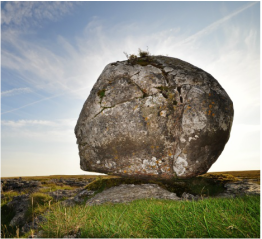 Erratic boulder on Scales Moor (Mike Green) / CC BY-SA 2.0 Erratic boulder on Scales Moor (Mike Green) / CC BY-SA 2.0 I work with people who are pursuing dreams and goals. You might say they are on a journey. Usually when we are on a journey we encounter obstacles… Say you are going to go for a hike... Well, if you set a large goal for yourself, like hiking the Pacific Crest Trail, you KNOW you will run into unforeseen obstacles like storms, boulders, maybe even grizzly bears. Your boulder in real life might be internal like your own fear, resistance, and doubt. Or it might be external, like being fired or suffering an unexpected loss. What to do? Well, believing it IS surmountable is key. But before you can do that, you need to be able to SEE what the obstacle is. You have to be willing to get curious. If you meet a boulder on the path but all you do is hate that it’s there and put your blindfold on and hope it will move on it’s own – nothing’s going to change. And you’ll be stuck. But if you are willing to put your glasses on and summon some courage to find out what it is – what it looks like, feels like, how tall it is… Well the fear starts to recede and you arm yourself with powerful data about how to get past it: how to work with your fear, doubt, and resistance. You might even have fun along the way, learning to solve the problem.
The obstacle in the path is a powerful and helpful metaphor. Next time you get stuck, try to see yourself on a trail and figure out which obstacle this is: a drove of hornets, a dead-end trail, a lightening strike? (Doubt in your ability, a failed attempt, fear of success?) Then you can summon your resources, call on help, and strategize, so you can keep going – with more confidence than you had before. What are your obstacles on the path? Leave a comment below and start a conversation! Best, Jen 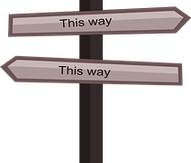 I recently had a conversation with a friend who in the last 5 years lost her career direction due to things outside of her control. Because she has many interests, she fears that by choosing a direction she’ll lose out on exciting opportunities… And so now she is waiting for some sign or assurance to pick the right one. Who hasn’t felt this way? While we all would like some assurance we are going in the right direction, the problem is that it can get pretty paralyzing: waiting for the “right choice” to show itself and make itself known. If you struggle with this, here are some words of encouragement to help you get moving  1) There is no Perfect Choice. The idea of a “right” choice can lead to stagnation. Cultivating a mindset of going with the best choice for you now will help free you up. Believe it or not, there is more than one choice out there that will help your life unfold in a good direction. 2) Beware “the road not taken.” I’ve heard from some clients that if they choose something and don’t like it, they’ve wasted their time. Ever imagine the “road not taken” and picture THAT choice having gone better (with fairy dust and golden light)? But that’s all in your head! Valuable lessons are learned whichever path you take. 3) You unlock magic when you pick a direction and stay the course for a while. You never know what the seeds you are planting now will look like when they break through the soil. When you learn to stay and keep pursuing your plan, beautiful things occur: opportunities and possibilities emerge you could not have predicted, and confidence in yourself grows. 4) Wherever you go, you take yourself along. All our interests, passions, personality traits, and strengths go with us when we choose a course of action. And they help mold it. 5 people may all set out to become graphic designers or gardeners. But 5 entirely different results may occur due to connections made along the way, saying yes to different opportunities, engaging different strengths, and following different values. So remember, THE MOST IMPORTANT THING: Pick a direction and get into action. There is magic out there, but you have to get into action to unleash it. If you feel inspired and are ready to get moving, give me a call for a free consultation. Like this newsletter? Please share with someone who could use the encouragement! All The Best, Jennifer |
Tips and resources to help you on your path.
Sign up to receive this in your inbox: Archives
October 2016
Categories |

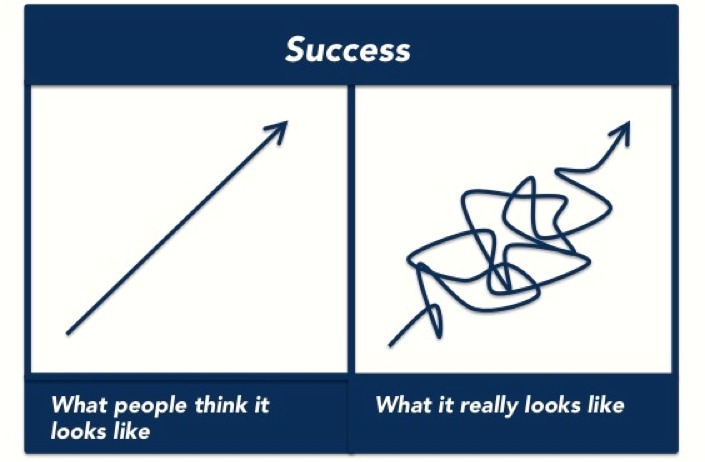
 RSS Feed
RSS Feed
